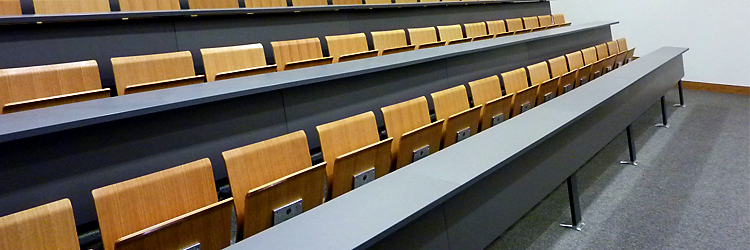Most American universities are no longer sustainable in their current form
The COVID-19 pandemic placed into bold relief how inadequate most of our country’s universities have become for students and faculty alike.
Why? Although the coronavirus prompted most postsecondary institutions of higher education, and instructors who work there to pivot to on-line teaching, the experience was mostly suboptimal and in many cases dismal for both instructors and students.
Undoubtedly many universities attempted to do their best, demonstrated resiliency, made the most out of a bad situation, and the instructional staff learned new skills, improved the ones they were using, and experimented with different modalities of instruction. Students were also given real world life experiences on how to be flexible, learn to learn on one’s own, etc.. That being said, there were and are significant challenges, many of them which predated the pandemic, and most of which still persist.
What happened? I believe that at least five inter-related things happened.
Many instructors felt as if their university abandoned them
In the best case scenarios, administrations got ahead of the pandemic and started sending faculty and other instructional staff helpful e-mails on how to proceed in the event that universities were forced to go remote, and some of them offered beefed up on-line assistance and workshops. In some of these educational environments faculty, chairs, and deans stepped up to the plate and juggled available resources so that faculty could do the best they could in this new teaching environment. In the worst case scenarios administrations told their instructional staff to figure out how to teach remotely and get back to them if they had any questions. The message was clear; you are on your own.
In many situations, however, as instruction moved on-line, the Information Technology systems and departments of many universities could not handle the overwhelming number of instructors who were teaching on-line, and students logging in, all at the same proscribed time. The IT systems were slow, and some of them crashed. When instructors and students reached out to their IT departments, it was like trying to contact an airline after massive flight cancellations; they were either bombarded with requests or missing in action. Most instructors did their best even though they may not have known how to use or master the new technology. But they learned. To add insult to injury, many students did not have access to a personal computer, or a reliable internet connection, or they were fish out of water with on-line teaching protocols. Again many universities attempted to accommodate to the situation.
Support given to instructors was inadequate
Many institutions of higher education were either unprepared or unable to assist instructors transition to on-line teaching platforms. Sure there were off the shelf, or hastily configured skills based learning workshops, but many were not that helpful. Skill acquisition re teaching on-line was mostly done via trial by fire, faking it until you made it, and trial and error experiences. Meanwhile many faculty, staff and administrators fell sick (and some died), or they were thrust in to the position of primary or co-caregiver to an ailing relative, or they assumed additional child care responsibilities. This was particularly disturbing for faculty who had children and spouses who were also working at home and on-line. Again the administration was poorly equipped for this situation. They did not have resources in place to adequately support instructors. Special needs students fell even further through the cracks and the burden fell upon instructional staff to do triage. In some universities they pushed their faculty back into unsafe classrooms and gave them a modicum of PPE, and failed to require students to socially distance, etc.
Faculty and other instructional labor, and Ph.D. students quit
Most people who enter academia know that the salaries are not great. But they are willing to sacrifice the low earning potential for other benefits like flexibility, intellectual engagement, and more nebulous aspirations like the chance to make a difference. But the lack of support from supervisors and senior management, the incessant bureaucracy, and toxic evaluation practices, can wear on the soul.
The reality is that salaries are not keeping up with inflation. Part of the reason is because many state governments are cutting higher ed funding like crazy and university systems are forced to freeze wages, etc. The fact that you need to get an offer somewhere else to prove your real worth to your current academic institution is byzantine. In many cases there was a pull push dynamic. Salaries are low, but the private sector provides many of the same benefits that people who used to aspire to in academia found. Faculty have had it with toxic work environments and they saw how some areas of the private sector seemed to value knowledge workers more. When you look left and right and start hearing stories of your colleagues who are taking early retirement, or who have quit (dubbed the great resignation) because of low salaries and toxic environments then it’s hard not to start asking yourself questions like “what the hell am I doing here?”
Granted some people probably never should have entered academia in the first place, but stories started emerging of graduate students barely surviving on poverty wages, and individuals with doctorates and publications who had been struggling for the past decade with adjunct positions, and struggling to get that first tenure track job etc. When faculty, staff and administrators increasingly can’t afford the rent or to purchase a home in the same city where they teach, something is damn wrong.
Student enrollment decreased
Even before the pandemic, liberal arts college and university enrollments have been declining. Students are opting more for the professions, and trades, rather than the liberal arts. Otherwise, they are unsure of what profession to enter and their parents are unwilling to foot the bill for what might appear to be a lifetime of student debt. Some are taking extended breaks from their studies.
Students disengaged
During the COVID and post-COVID period, faculty started noticing that attendance at classes whether they were virtual or face-to-face was abysmal. And it was not simply butts in seats, but students were not submitting or completing their assignments, sitting for tests, etc. Could all of these students have come down with COVID at the same time? Did they, like faculty and other university personnel, all have caregiving responsibilities that impeded their ability to follow through with the responsibilities of being enrolled? Was the content and the method of teaching be so abysmal? This dynamic is more complex.
How Can We Fix Things?
Most universities do not have the knowledge, skills, and experience to weather this storm and thus they are going to have to evolve or die. We can’t depend any longer on armies of adjuncts or part timers trolling for poverty wages as we currently do to teach. And it does not make sense to lead, manage, or work in institution where the majority of workers and students appear alienated, disgruntled, and where morale is incredibly low.
In some cases it may be too late. Some institutions of higher education will have to shutter their doors. In fact over the past decade we’ve already seen a handful of universities (albeit smaller liberal arts colleges) due to financial mismanagement and a concomitant lack of ability to attract doners, students or research grants follow this path.
Although the Ivy League universities probably do not have anything to fear, other post-secondary educational institutions, to the protests of many faculty, staff and administrators, are frantically putting into place early retirement programs, or consolidating programs, departments, and colleges, and considering amalgamating or joining consortiums in order to leverage their resources, and hopefully benefit from cost sharing/saving arrangements.
Skilled administrators who can rally the troops, and forge connections with other educational leaders and other universities, local businesses and elected politicians may be able to keep their ships afloat.
Meanwhile, the natural tendency is to blame someone, or some group, and we have plenty of scapegoats. We can point fingers at university leaders, an overabundance of senior administrators, faculty, staff and even students. We can also blame parents and elected and appointed politicians who have unrealistic expectations about the goals and missions of universities. The other worn out strategy is to bring in the outside consultants.
But these approaches are not going to solve anything. They may even make things worse. What we need is a major rethinking of the role and purpose of post secondary education and how the institutions that occupy this space are going to achieve their complex and competing missions. What is more important is that we will not have widespread agreement because there are competing interests at stake.
The problem and challenges of the post COVID university squarely rests on the shoulders of the wider society. But most people don’t have the foggiest idea what the purpose of universities are other than to enable students to get a job or a better one upon graduation. Maybe, just maybe, we will have an honest conversation about the meaning and purpose of university education. In that case we should go back to first principles. What is the major mission of the university, and is this the best way to achieve it?
Photo Credit: Sean MacEntee
lecture room











